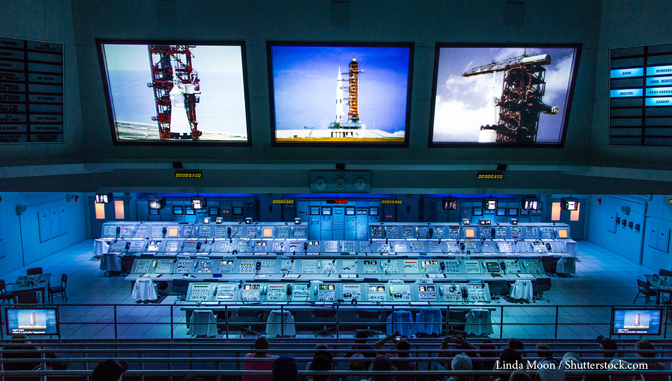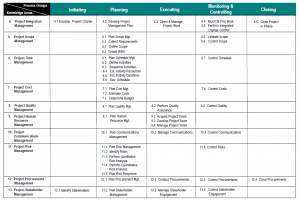Excelsior Presents Project Management Case Study Webinar on Historic Apollo 11 Launch

“That’s one small step for man, one giant leap for mankind.”
Even if you weren’t alive for the United States’ historic Apollo 11 space mission in 1969, you’ve probably heard Neil Armstrong’s famous quote spoken as he took his first steps on the moon.
What you probably don’t know, is the story behind all the years of planning and preparation that it took to make the Apollo mission a success. On May 22nd, Excelsior College hosted a webinar titled “Small Steps and Giant Leaps” that took another look at this monumental undertaking with a project management perspective. Presented by Mark Bowman, a Spacecraft Systems and Crew Operations Lead, Flight Dynamics Division at NASA Lyndon B. Johnson Space Center as well as a member of the Excelsior College Alumni Leadership Council, the program examined the historical context in the years leading up to the launch, the project management process and lessons learned.
Throughout the 1950’s, Cold War tensions between the United States and the Soviet Union ran high as both sides were striving to demonstrate the superiority of their systems through political expansion, military, industrial, and scientific achievements. The “Space Race” grew out of this rivalry with the two world powers pushing to claim each technological milestone first.
After several early victories for the Soviet Union, including the first successful satellite launch with Sputnik, the United States significantly ramped up their space program. The National Aeronautics and Space Administration (NASA) started operating in 1959 with a budget of $150 Million and immediately began Project Mercury, designed to put the first man in orbit. In 1961 President John F. Kennedy upped the ante with his State of the Union Address in which he stated: “I believe that this nation should commit itself to achieving the goal, before this decade is out, of landing a man on the moon and returning him safely to the earth.” With that statement, “Project Apollo” began. Mr. Bowman put into perspective just how audacious a goal this was considering that a mere 57 years earlier the airplane had been invented.
Mr. Bowman then broke down the entire Apollo project using the Project Management Body of Knowledge (PMBOK), a system that uses process groups and knowledge areas the plan and execute a project:

The PMBOK provides valuable guidelines for Project Management Processes and Knowledge Areas that have been accumulated over many years of experience around the world, are tailorable, and should be used as a starting point for any project.
From May through November, 1961 the planning process took place in earnest. Four in-depth studies were performed by NASA and 1 jointly with the Department of Defense. The studies looked at launch vehicle needs, spacecraft requirements, explored three different options for reaching the moon, and identified all 1200 tasks that would need to be performed during a lunar mission.
The studies determined that during first six months, NASA had to do 6 things to meet its “within the decade” goal:
- Assign program management and system responsibility (essentially, develop a Project Management Plan)
- Obtain re-entry heating data to enable Apollo spacecraft design
- Complete contracts for Apollo and launch vehicle development
- Establish flight crew make-up, selection techniques, and training plan
- Accelerate engine funding
- Initiate Construction of Facilities:
- Center for spacecraft dev and astronaut training (JSC)
- Launch facility and Vehicle Assembly Building
- Tracking stations
Three major caveats were identified; failure of any one of which could prevent meeting the goal within the decade:
- Immediate funding
- Major catastrophes
- Relief from labor slow-downs
From this starting point, all identified stakeholders used what they had learned in the discovery process to define and sequence activities, estimate activity resources and durations, develop a schedule.
Despite a tragic, “major catastrophe” in the form of a fire during an early ground test that took the lives of three astronauts, the team was able to overcome the schedule delay and meet the “end of decade” goal with five months to spare.
An extremely complex project that was nearly a decade in the making, the Apollo Project underscored the need for cooperation, adequate budget allocation towards scientific and technological innovation and of course, efficient project management!
If you’d like to read more in depth information about the engineering lessons learned from Apollo and subsequent programs, Mr. Bowman recommended the NASA Systems Engineering Handbook (SP-2016-6105), Rev 2 and in Expanded Guidance on Systems Engineering (Volumes 1 & 2), which have both recently been updated and are available free of charge online.
visit our Alumni Events Page to see what webinars we have coming up. A recording of this webinar is available for our alumni community by logging in.


